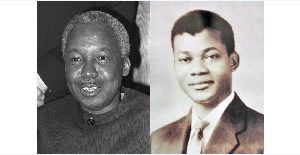Ghana is the second most endemic country for buruli ulcer after Cote d’Ivoire globally. This was made known after I was interviewed about the vision of BUVA Foundation, a charitable non-governmental organisation into public health, of which I am the founder.
In the interview, I revealed how I suffered from this mysterious disease for almost three years and was admitted to the hospital to receive treatment. I went through ten surgical operations at St. Martin’s Hospital at Agroyesum where I saw the plight of my fellow sufferers. This motivated me to establish this foundation to help other patients in education, job training and raising public awareness of buruli ulcer.
Thanks to the financial and moral support from Matuoka family from Japan, I was able to complete my education. I also had support from my Doctor, Dr. Kingsley Asiedu and also from friends in the United States. Not long ago, I received more than $1,500 from Matuoka Family in Japan0 to assist five patients of buruli ulcer in their education at the polytechnic, nursing training college and senior high schools through Dr. Kingsley Asiedu (WHO medical officer for buruli ulcer in Geneva)
Despite the high morbidity rate of buruli ulcer, it has been neglected completely. It is therefore not surprising when WHO described it as a neglected tropical disease. Hence most policy makers have no interest in buruli ulcer but we are doing a great mistake. This is a disease that makes the able person disable. Most of us have lost our arms and legs through amputations whiles others have lost their eyes and their reproductive system.
The first few cases of Buruli ulcer in Ghana were described around 1971 in the Greater Accra region.
The focus was along the Densu River and its tributaries. Later in 1989 additional cases were discovered in the Asante Akim North district of Ashanti region by a dutch named van der Werf.
The public health care system saw the seriousness of the disease but efforts to tackle the disease remained latent until political and media interests on Buruli ulcer surged around 1992.
Buruli ulcer is caused by a bacteria called mycobacterium ulcerans; a bacteria which is in the family of those causing leprosy and tuberculosis. But buruli ulcer has lost a profile in public health hence finding it difficult to even attract donor support. Meanwhile this is a disease affecting people who live on less than a dollar a day. Besides, children below the age of fifteen and women are more vulnerable to infection. Although the mode of transmission of buruli ulcer is not yet known, there is the need for a collaborative efforts and commitment in fighting this mysterious disease. Children who are suppose to be in schools and learn are dropped out from school for treatment which last very long. These children after treatment end their education, simply because the family is poor and the little money available have been used for treatment. Others who have the assistance to go back to school feeling shy due to stigmatisation.
Buruli ulcer has been reported from 30 countries in Africa, the Americas, Asia and the Western Pacific, mainly in tropical and subtropical regions. In Côte d'Ivoire, approximately 24 000 cases have been recorded between 1978 and 2006. In Benin, nearly 7000 cases have been recorded between 1989 and 2006. In Ghana more than 11 000 cases have been recorded since 1993. In Australia, more cases of BU are being reported recently – 25 in 2004, 47 in 2005 and 72 in 2006. Most of the recent cases have come from the State of Victoria and the town of Point Lonsdale. Increasing number of cases are being reported from Cameroon, Congo, Gabon, Sudan, Togo and Uganda.
This should not continue because each person is needed in the socio-economic development of our dear nation.
Credit: Emmanuel Naaba Aguma
Founder: BUVA Foundation
Email: naabagumah@yahoo.com
Opinions of Monday, 7 March 2011
Columnist: Aguma, Emmanuel Naaba
Ghana Is Second For Buruli Ulcer Globally
Entertainment













